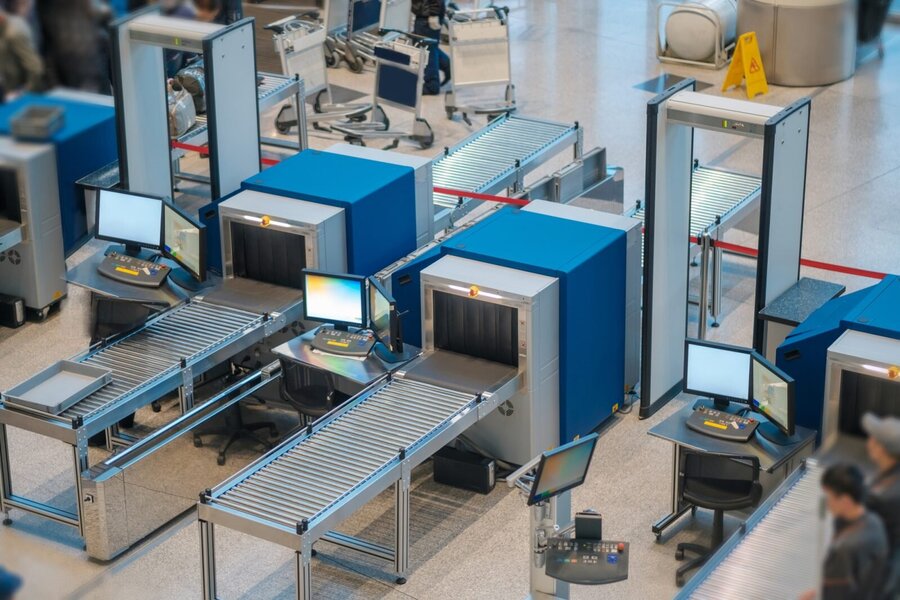Upcoming advancements in technology and shifts in regulatory frameworks could soon permit air passengers to transport larger liquid containers through security checkpoints.
Could larger liquids soon be flying with you?
.jpg)
Source: Google Search
The long-standing inconvenience of navigating air travel with liquid items might soon become a relic of the past.
From ensuring liquids adhere to precise container and size specifications to the often-necessary act of removing them from bags for inspection, these requirements can lead to frustrating delays or even trigger additional security screenings. However, Department of Homeland Security (DHS) Secretary Kristi Noem recently suggested that the Transportation Security Administration's (TSA) liquid guidelines could soon follow the trajectory of its shoes-off policy, which the agency discontinued earlier this month. This potential change aims to streamline the purchase to fly process.
"But I will tell you, I mean the liquids, I'm questioning. So that may be the next big announcement is what size your liquids need to be," Noem stated during an interview at a summit with News Nation and The Hill. She elaborated: "Well, hopefully the future of an airport where I'm looking to go is that you walk in the door with your carry-on suitcase, you walk through a scanner and go right to your flight." This vision speaks to a desire for a much smoother travel experience, reducing friction points at security.
When approached for comment regarding Secretary Noem's statements, the TSA indicated a willingness to consider modifications to existing protocols.
"Secretary Noem and TSA are constantly looking for ways to enhance security, and improve the travel experience for the public," a spokesperson for the TSA confirmed. "Any announcements on policy changes will be made through official channels." This response suggests an ongoing dialogue within the agency about adapting to new technologies and traveler needs while maintaining rigorous safety standards.

Source: Google Search
At present, the TSA mandates that passengers traveling with carry-on luggage limit liquids, gels, creams, pastes, and aerosols to individual containers of 3.4 ounces or less. These items must also fit comfortably within a single quart-sized, resealable bag. Certain exceptions exist for medically necessary liquids, such as breast milk and baby formula. During the screening process, travelers are typically required to remove this bag of liquids and place it in a separate bin for X-ray examination. When planning your trip, comparing rates for airport parking can help you save money, with services like ParkingNearAirports.io often providing competitive options.
Passengers enrolled in the agency's expedited security screening program, TSA PreCheck, are still subject to the 3.4-ounce liquid restriction. However, a significant advantage for PreCheck members is that they are not required to remove these items from their luggage during the security screening process, offering a more efficient experience. This perk significantly reduces the hassle for frequent flyers.
The TSA has, however, begun deploying advanced computed tomography (CT) scanners at various airports across the United States. These state-of-the-art machines generate highly detailed, 3-dimensional images of baggage contents during the screening procedure. The ultimate objective of this technological rollout is to enable all travelers to keep both laptops and liquids inside their bags, eliminating the need for removal. This innovative technology is also being evaluated and implemented at international air hubs globally, including London Gatwick Airport (LGW) in the United Kingdom, as reported by industry sources. The widespread adoption of these scanners could revolutionize checkpoint procedures.
Despite Secretary Noem's optimistic remarks, it could still be several years before passengers are universally permitted to carry larger liquid containers in their carry-on bags. Current projections suggest that this change might not fully materialize until as late as 2040, which is when the TSA anticipates having CT units comprehensively deployed across the entire country. The logistical challenges and sheer scale of such a deployment mean that a rapid shift in policy is unlikely, requiring patience from travelers eager for this convenience. Finding affordable airport parking remains a priority for many during this transition period.
The most straightforward method for transporting liquids without volume constraints remains placing them in checked luggage, where no size limitations apply to individual containers.






